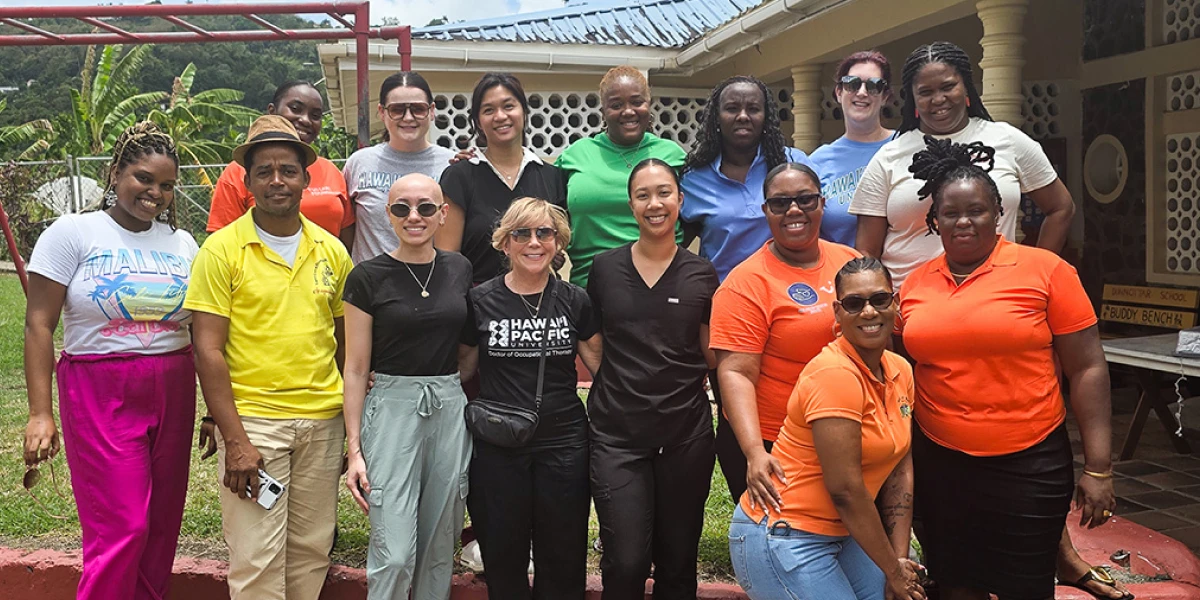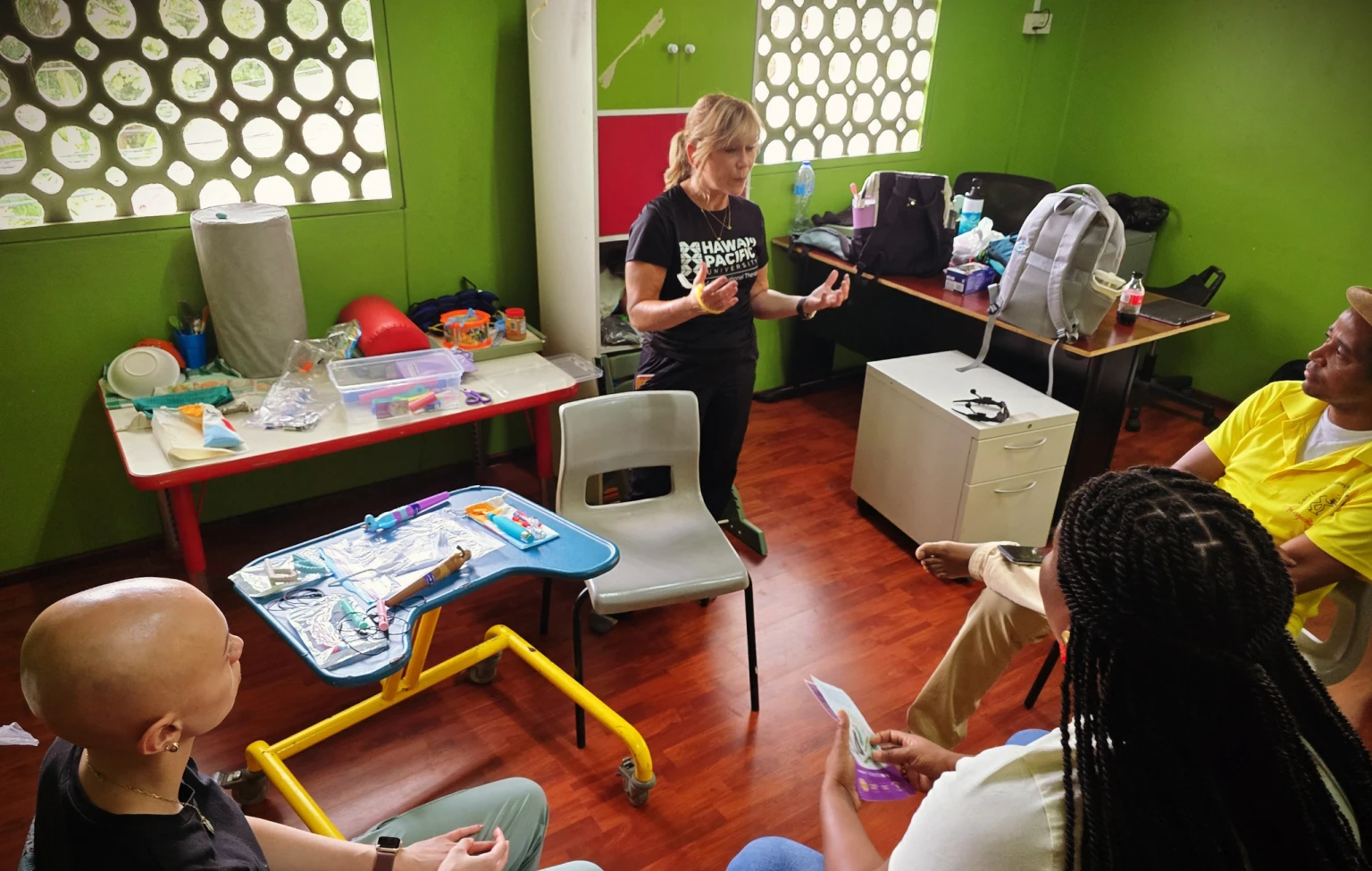Service learning integrates academic instruction with meaningful community engagement, giving graduate health care students the chance to apply clinical knowledge in real-world settings.
When built intentionally into the curriculum, it can accelerate clinical readiness, strengthen cultural competence and deepen a university's relationship with the communities it serves.
Employers need graduates who can communicate effectively, adapt quickly and deliver culturally responsive care, skills developed most powerfully through direct work with patients and community partners. At the same time, today's students expect their education to align with their values and prepare them for purposeful, community-centered careers.
For these reasons, service learning has become a strategic priority for forward-thinking health care programs. It enhances student outcomes, reinforces mission and demonstrates authentic community impact.
Service Learning in Action: Real-World Examples From HPU’s OTD Program
This past spring, first-year students at Hawai'i Pacific University's (HPU) Doctor of Occupational Therapy (OTD) program traveled to St. Lucia for a weeklong, faculty-led service-learning experience that immersed them in real clinical environments and meaningful community partnerships.
Under the leadership of Dr. Emerson Hart and Dr. Patty Coker-Bolt, students worked alongside local therapists, educators and families to address complex occupational needs with limited resources.
During the trip, students:
- Led educational workshops on feeding, sensory processing, seating and contracture management
- Donated and demonstrated custom light boxes for children with visual impairments
- Adapted interventions in low-resource settings using creativity and cultural awareness
- Provided caregivers and teachers with sustainable, hands-on training
The experience pushed students beyond theoretical competence and into the realities of global and community-based practice.

HPU faculty saw the transformation firsthand. Dr. Hart described watching students with "compassion, clinical skill and confidence" work with children who had complex needs. For OTD student Irene Nelson, the experience was equally profound: "I came to give, but left having received so much more."
Local partners echoed the value of the collaboration. "Their care and willingness to train and assist us will make a difference in the lives of our children," said Zanique Edwards, a teacher at the Dunnottar School.
What happened in St. Lucia is more than a compelling story — it is a case study in what service learning makes possible when institutions lean into mission-centered, community-grounded education.
How Experiential Learning Builds Clinical Skills in Service Learning Projects
The environments students encountered in St. Lucia reflect challenges they will face in their future practice: complex conditions, limited resources, diverse cultural contexts and the need for adaptive, collaborative problem-solving.
This is precisely why service learning is rising in strategic importance.
"Health care professions are inherently practice-based," said Devan Whitaker, marketing manager at Evidence In Motion. "Service learning allows students to engage in authentic, community-based practice, not just classroom or lab simulations. It accelerates the development of skills employers consistently say they value: communication, teamwork, leadership and cultural responsiveness."
These experiences help students develop the mindset they will need throughout their careers: humility, curiosity, empathy and the ability to serve diverse communities with respect and relevance.
For universities, this is where service learning becomes a differentiator, not because it is experiential but because it is real.
How Universities Can Communicate the Impact of Service Learning
Even well-designed service-learning programs can fail to influence reputation or recruitment if institutions do not communicate their impact clearly.
"Having strong service-learning programs is important, but if institutions don't communicate the outcomes, the benefits get lost," Whitaker said. "Storytelling, real community voices and clear metrics help show the value, not just to prospective students but to accreditors and the public."
For higher education leaders, this means embedding service-learning narratives and evidence throughout:
- Recruitment materials
- Accreditation documentation
- Alumni and employer communications
- Donor and community engagement strategies
- Digital content and multimedia storytelling
Institutions should highlight not only what students did but what they learned and how communities were strengthened through reciprocal partnership.
Clear, authentic communication turns service learning from a program feature into a strategic asset.
Preparing Purpose-Driven Clinicians Through Community-Centered Service Learning
The future of health care demands clinicians who are skilled, culturally attuned and guided by a sense of purpose. Service learning, when integrated meaningfully into curriculum design, cultivates these qualities more effectively than any classroom-based strategy.
Whitaker emphasizes that students themselves are seeking this alignment: "Students want to make a meaningful difference. Service learning connects academic training with purpose."
For universities, this is the opportunity and the imperative.
Service learning prepares students for a workforce that expects adaptability. It signals to communities that the institution is a committed partner. And it reinforces a mission-centered identity that resonates with students, faculty and employers.
HPU's St. Lucia experience demonstrates what happens when service learning is treated not as a trip or a project but as a pathway toward building competent, compassionate, purpose-driven clinicians.
And that is precisely what the future of health care education requires.
Editor’s note: Portions of this article include adapted descriptions, quotes and details from the HPU OTD Program Guide documenting the St. Lucia service-learning experience.

